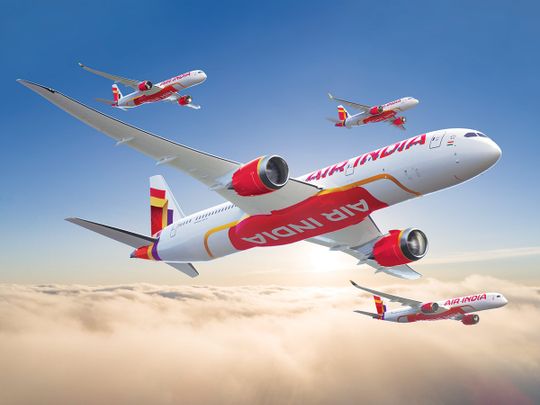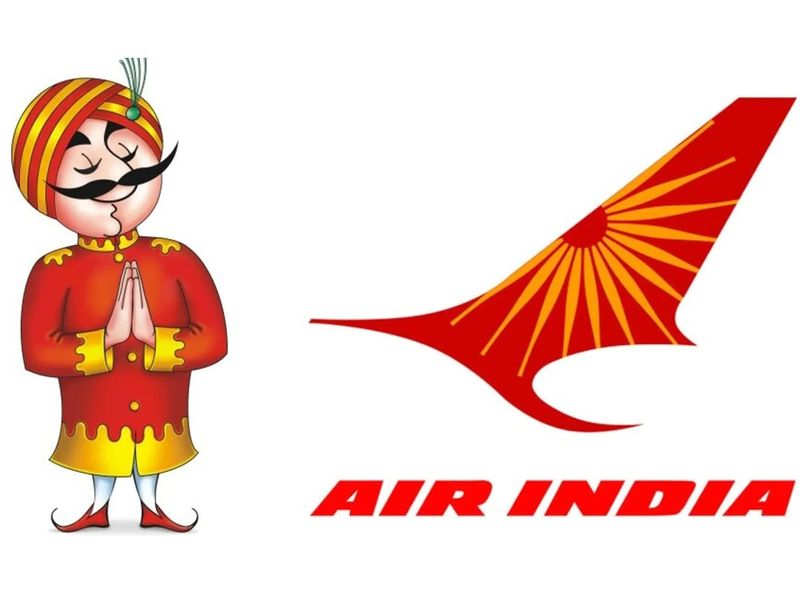
Dubai: In the recent past, Air India has got itself a new owner, a revamped management structure, and placed an attention-grabbing order for aircraft. India’s national airline is not stopping with that – it has gone and changed all of its looks too.
The rebranding of one of the world’s oldest airline sees less of the ‘Maharaja’ mascot and bolder patterns adorning its aircraft. Will all this signal that Air India is willing to catch up with the world’s best airlines on performance and all other aspects of ensuring passengers get to have a smooth flight?
Airline industry sources keep talking of delays continuing to dog operations, especially on services to and from the lucrative UAE and Gulf sectors. Which is why the airline still has ways to go on the operational side.
“Substance remains the true passport to enduring success,” said Ashwani Sharma, Vice-Chairman of the Aeronautical Society of India and a former Air India official.
'Substance over style'
True, if Air India with its brand new looks has to compete with Gulf carriers – there are more coming, such as Saudi Arabia’s Riyadh Air - then the style has to meet substance.
Last week, the Tata Group-owned Air India revealed a new brand and livery with an updated logo and colour scheme. The livery features a palette of deep red, aubergine and gold-hued highlights within a chakra-inspired pattern. Tata is also working on a refreshed identity for the wholly-owned subsidiary Air India Express.

Air India has also cleverly incorporated the colours of the other Group carrier Vistara, as the airlines prepare to merge into one entity. Travelers will begin to see the new logo starting December 2023, when Air India’s first Airbus A350 enters the fleet in the new livery.
“While the new logo, livery and interiors may have caused quite a stir on social and mainstream media, unless the airline prioritises on-time performance and overcoming several operational challenges, they will find it hard to create a new customer base,” said Sharma.
“The consumer chooses an airline based on airfares and on-time performance. And that will remain the bottom-line.”

Air India and Air India Express have grappled with persistent delays, particularly on UAE-India routes, said Sharma. According to travel data provider OAG's July 2023 report on punctuality, only 71.3 per cent of Air India's scheduled flights arrived on time, accompanied by a cancellation rate of 0.4 per cent.
For Air India Express, 81 per cent of flights adhered to their schedules, while 1.5 per cent experienced cancellations.
New look, new interiors
The airline also unveiled visual representations of the potential new cabin interiors. Air India CEO Campbell Wilson said the transformation of the fleet has already begun with the airline leasing and buying 20 wide-body aircraft this year.
A $400 million program to refurbish the interiors of its legacy fleet of 43 wide-body aircraft will begin in mid-2024, leading to new seats in every cabin, revamped inflight entertainment systems, and inflight wi-fi internet connectivity.
“By March 2024, 33 per cent of the airline’s wide-body fleet will be upgraded, and over the next two-and-a-half years, its entire long-haul fleet will be reborn,” said Wilson.

Lacks a cohesive narrative
What matters is how Air India’s passengers take on the changes. “While public perception is one thing, there is also a lot of nostalgia and nostalgic memory associated with Air India’s livery and branding,” said Sharma.
“The current logo and livery are a far cry from the centaur of the 1960s and the ‘Your Palace in the Sky’ colours of the 70s. The old liveries were authentically Indian, and combined with the ‘Maharaja’, there was some cohesiveness in the overall branding.
“With the new one, they have not been able to retain the nostalgic connection.”
Mark D. Martin, CEO of Martin Consulting, is another who can’t quite get why the airline had to make such a wholesale brand change. “I’m not sure why Air India doesn’t follow the ‘if it ain’t broke, don’t fix it’ principle’.
“The previous Air India typeface, consisting of English lettering and Hindi varnamala text, conveyed notions of speed, motion, transportation, agility, and operational efficiency. It also represented a romantic warmth of what India has to offer.
“The newly introduced Air India font (a bespoke Air India Sans) and logo falls short in capturing the essence of India.”
Wait and watch
All said, Air India is familiar with rebranding activities. This is the eighth one since it first took to the skies about 91 years ago.

“I like the rebrand, and like all rebrands, it will take time to grow on the travelling public,” said Mike Arnot, a commentator on the airline industry trends.
“The typeface vaguely reminisces of Air Canada - which went through its rebranding process. There, they chose a black and red motif.
“Some customers were initially unsure of that concept, but it’s turned out well for the Canadian flagship. The same holds for Air India. They needed to move away from the old to signify the new.”
More importantly, the rebrand will take shape over several years, and the airline have a massive, shiny new fleet of aircraft to paint to usher them into the future of Air India.








